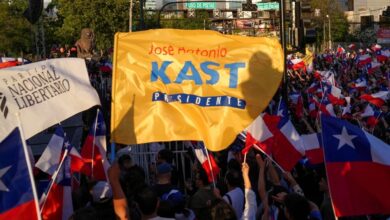Chile Celebrates Century of Colo Colo’s Working-Class Identity

A century passed since Colo Colo’s foundation this week. The club continues to be closely connected to the working class of Chile. Successes and struggles have reshaped it over time. The lasting inheritance of the nation’s most followed team is a dedication without change to the poorer groups it stands for.
A Founding Spirit Rooted in Rebellion
Colo Colo’s nature can be understood through examining the turmoil that led to its start in 1925. The club resulted from a split inside Magallanes. That team’s leaders opposed updates plus stayed attached to amateur customs. David Arellano, a young teacher and soccer player, directed a group of young players. They desired order, expert training, and just treatment for athletes. Their goal was to improve the game’s ethical standards. They pushed for fully supplied changing areas and planning strategies as well as focused on good health rather than drinking.
In one story, stress increased at a meeting on April 4, 1925. Changes to voting rules defeated Arellano’s try for team captain. Because he felt double-crossed, he and his friends left suddenly. That exit showed the moment of complete change. As recounted in various historical accounts, David or his brother Francisco Arellano exclaimed, “Let’s leave this place,” spurring the rebel group to exit the premises with fury in their hearts.
Fifteen days later, they founded Colo Colo on April 19, 1925. The club’s title showed a distinct shift from accepted customs. The founders chose to acknowledge the Mapuche leader “Colo Colo.” They connected with rising national sentiment across Latin America. It promoted area traditions over the refined European style valued by the upper class. Within a decade, the newly minted club was recognized nationwide for its organizational rigor and on-field achievements, capturing the imagination of ordinary Chileans who saw in its resolve a reflection of their struggles.
The “People’s Team” Versus the Catholic Elite
Comparing Colo Colo’s rise with that of another famed Chilean club, Universidad Católica helps clarify Colo Colo’s working-class roots. Founded in 1937 under the auspices of the Pontifical Catholic University of Chile, Universidad Católica derived prestige from its affiliation with intellectual circles and the Church. Eventually, the club attracted middle—and upper-class followers who wanted their identity to reflect academic and social traditions. The games between the two teams evolved into events that symbolized the impact of two distinct worlds coming together on the field.
Colo Colo gained strength from passionate fan support in the stands, while Universidad Católica highlighted its professional management approach and sophisticated playing techniques. During the 1920s and 1930s, economic inequality led to living conditions that increased Colo Colo’s popularity as it represented the interests of people who were ignored by societal leaders. Even after becoming the most decorated Chilean club, this unbreakable loyalty to the underdog remains the foundation of Colo Colo’s identity.
Indeed, one might say that Universidad Católica, with its origins in an elite educational institution, reflects the face of another Chile—urban, well-resourced, academically anchored—. In contrast, Colo Colo’s story mirrors more humble origins, built on rebellious teachers and laborers who demanded respect for the craft of football. One hundred years afterward, such differences continue to influence club characters. They provide energy to intense matches, reflecting basic cultural separations inside Chilean society.
Champions, Tragedies, and a Cultural Force
Colo Colo’s record on the field has helped anchor its place as Chile’s biggest club. With 34 league titles and a historic Copa Libertadores triumph in 1991—the only Chilean side to claim the continent’s top prize—the “Cacique” has delivered countless moments of national pride. Yet, not all high-profile matches have ended in celebration. In April 2023, a tragic event underscored the risk that can accompany fervent fandom. Two supporters lost their lives outside the Estadio Monumental just before a match against Brazil’s Fortaleza. The event led to the game’s cancellation. Spectators entered the field plus produced destruction that received broad disapproval.
Doubters claim the team’s backers possess a violent reputation, presenting such disturbances as proof. However, insiders stress that Colo Colo’s fan base is diverse, spanning numerous complex internal movements to categorize. They note that painting all supporters as unruly “barra brava” or hooligans overlooks the everyday families who pass along their love of Colo Colo from generation to generation.
The contradiction in identity exists between the desire for public representation and the realities of corporate management. The club Colo Colo became bankrupt in 2002, which resulted in its management being transferred to a private organization about eighteen years ago. Fans maintain resentment because they think widespread ownership needs to return to the club. Critics see the current setup as a departure from Arellano’s progressive dream, while advocates say it’s the only way to ensure financial stability. Despite differences, a shared dream prevails: The goal remains to restore the club’s foundational community ties alongside maintaining its competitive achievements, which help build national pride.
The 1973 Copa Libertadores and Political Undercurrents
Colo Colo became especially important during 1973 when Chile faced severe political conflict leading up to Augusto Pinochet’s coup. That year, the team faced Independiente de Avellaneda from Argentina in the Copa Libertadores final. Games gave a brief feeling of agreement during growing stress. It offered a break from worries regarding the country’s situation. Colo Colo experienced a tight defeat during the final match. Notwithstanding this, their advance to this stage was significant for the culture. People from all backgrounds supported the club.
A famous event took place during that time. Star striker Carlos Caszely did not shake Pinochet’s hand before the 1974 competition in Germany. To those who supported the team, it represented the rebellious attitude present inside Colo Colo from its beginning. Brave actions that challenged authority, like David Arellano’s action, became part of the team’s history. Stories of how they stood up for what they believed in appear in the songs that fans sing and on cloths that hang in the stadium. The stories tell younger people that Colo Colo represents a kind of bravery.
Political ties made the club stand apart. The team has a good performance record. Success brings money plus recognition. Many supporters consider Colo Colo, “the people’s team.” They see it as belonging to the everyday man or woman who demands respect and fair play, just as Arellano’s group once demanded fair representation at Magallanes. The 1973 final and Caszely’s defiance amplify that historical thread of activism and defiance against entrenched power.
One Hundred Years On, the People Still Matter
Today, Colo Colo stands at a crossroads. It remains Chile’s most illustrious football institution and a unifying force capable of rallying tens of thousands to the Estadio Monumental. Nonetheless, the challenges are manifold: Fan violence concerns, repercussions from the recent stadium tragedy, private management debates, and efforts to regain the original community spirit define the challenges. The popular identity stands as the central element of Colo Colo’s brand despite the significance of each dilemma they face.
That identity dates back to the bar where rebellious Magallanes players parted ways with their old club. Fueled by David Arellano’s visionary push for professional discipline, the founders set out to prove that football could be a tool for moral and educational growth. They saw the pitch as a crucible where young men might cultivate unity, resilience, and civic pride—traits that equally matter a century later.
In an environment where modernization can overshadow tradition, fans cling to the narrative that Colo Colo “belongs to all.” Many remember the storied final in 1973 as a symbol of national unity or Carlos Caszely’s refusal to greet an authoritarian regime figure as an emblem of moral fortitude. These accounts highlight how deeply the club has been linked to Chile’s historical currents—whether it’s the formation of a professional sports league, broader social changes, or confrontation with political oppression.
When discussing the difference between Colo Colo and an institution like Universidad Católica, supporters frequently point to class. Universidad Católica typically drew from academic corridors, enjoying a semblance of high-brow respectability. Colo Colo, by contrast, was the child of lower and middle classes seeking a sense of belonging—a rebellious alternative that championed working-class values. Over the decades, the lines have blurred, especially as professional football’s glitz entices fans of all social backgrounds. But the essential narrative holds: Colo Colo’s soul is anchored in the experiences of everyday Chileans.
As the club steers into its second century, questions arise about how it will adapt. Calls to re-empower the socios, or membership body, echo David Arellano’s original demands for accountability and fairness. Some dream of a future where socio-based democracy returns, unshackling the club from corporate management. Some worry about losing the monetary capacity required to stay competitive in South America. The story of how some young teachers separated from a conservative organization, aiding the creation of Chile’s well-known soccer club, is still an important example.
Conflicts sometimes diminish Colo Colo’s successes. Yet year after year, supporters from humble backgrounds continue filling the stands, singing tributes to Arellano and celebrating the pioneering spirit that earned the Copa Libertadores in 1991 and shaped many more accolades. Win or lose, controversies aside, that unwavering pride among working-class fans keeps Colo Colo’s hundred-year narrative alive and kicking.
Also Read: Latin America’s Boxing Heritage Threatened by Influencer Spectacles
In the end, whether one gazes upon a stadium mural celebrating the Mapuche cacique or recalls the rebellious walkout at Magallanes, the message is clear: The club represents those who give their all despite having the least resources. The club Colo Colo embodies more than its name and brand identity because it stands as an ongoing symbol of hope along with unity which fuels their determination to succeed despite all challenges. Even after a century, that identity, rooted in popular aspirations, shows no sign of fading.





